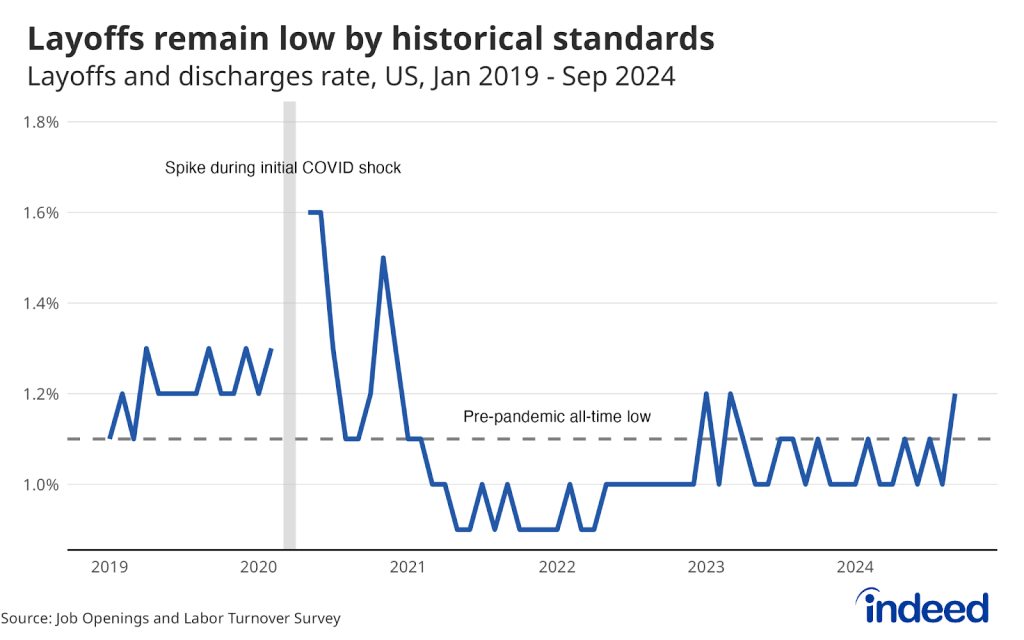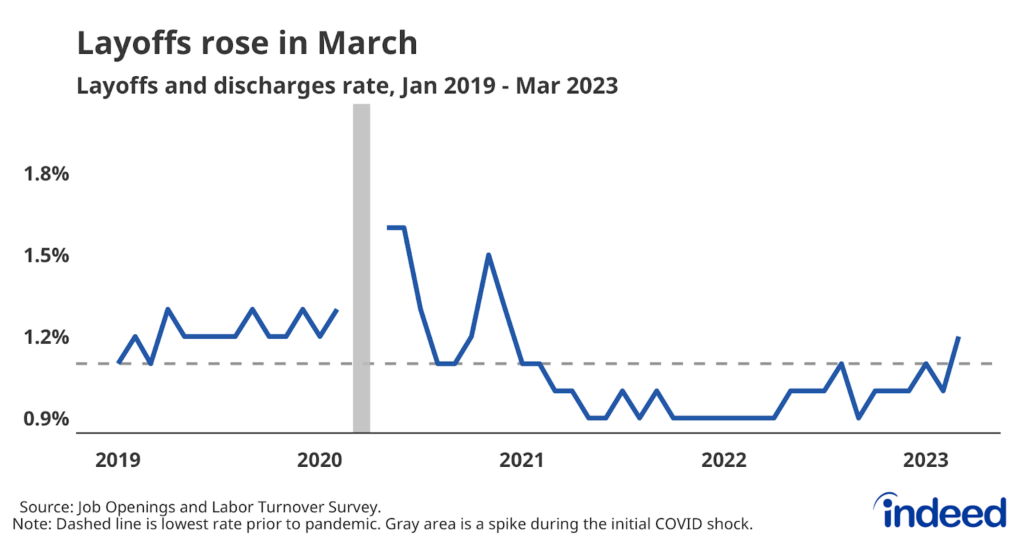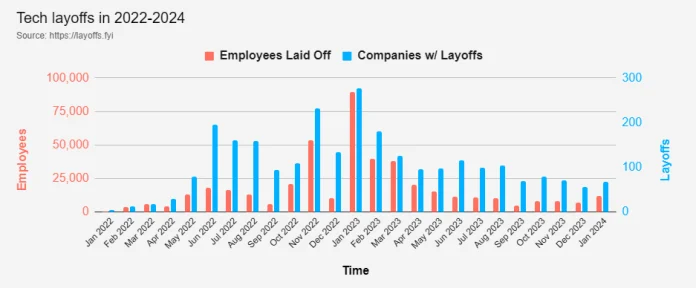In 2024, layoffs have become an increasingly significant and challenging aspect of the employment landscape, affecting workers across industries. The wave of layoffs this year reflects both shifting economic conditions and changing business strategies. Companies are restructuring to adapt to technological advancements,
changing consumer behaviors, and the need for leaner, more flexible workforces. From tech giants to retail chains, few sectors have been immune to the impacts, leaving many workers to navigate the uncertainties of job loss and career transition.
This article delves into the factors driving layoffs in 2024, their impact on both employees and companies, and the emerging trends and responses shaping the future of work.
Factors Driving Layoffs in 2024
Several macroeconomic and industry-specific factors have contributed to layoffs in 2024. Here’s a breakdown of the key drivers:
- Economic Slowdown and Inflationary Pressures: Global economies are feeling the weight of inflationary pressures and slow growth. With rising interest rates, many businesses are experiencing higher borrowing costs, which impacts their bottom lines. Companies facing reduced consumer spending and high operational costs are resorting to layoffs as a cost-cutting measure. The global economy is still in a recovery phase following the disruptions of recent years, and businesses are adjusting their workforce accordingly to remain financially stable.
- Digital Transformation and Automation: The rapid adoption of automation and artificial intelligence (AI) has transformed industries ranging from manufacturing to finance. While these technologies have the potential to increase productivity and efficiency, they also reduce the need for certain job roles, particularly those involving repetitive tasks. As companies invest in digital tools, some positions are phased out or redefined, leading to layoffs for employees whose roles become redundant.

- Shifts in Consumer Behavior: The post-pandemic era has seen significant changes in how people shop, work, and spend. For instance, the rise of e-commerce has led to layoffs in traditional retail sectors as physical stores close. Similarly, remote work and hybrid models have reduced demand for commercial real estate and related services, prompting layoffs in industries such as real estate management and hospitality.
- Corporate Restructuring and Mergers: Companies seeking to streamline operations or improve profitability may undergo restructuring processes that result in layoffs. Mergers and acquisitions often lead to consolidation of departments, as companies aim to eliminate redundancies and integrate operations. In 2024, several high-profile mergers have resulted in layoffs as organizations merge similar functions and reduce headcount.
- Pressure from Shareholders: Publicly traded companies face pressure from shareholders to maintain profitability and growth. When revenue growth slows, cutting costs through layoffs can appease investors by improving short-term profitability metrics. This pressure can drive layoffs even in companies that appear financially stable, as executives aim to optimize operational efficiency and reassure investors of future returns.
Industries Most Affected by Layoffs
While layoffs have touched multiple industries, certain sectors have been hit harder in 2024. These include:
- Technology: The tech sector has witnessed some of the most high-profile layoffs, with several prominent companies announcing reductions in workforce. Factors such as market saturation, increased competition, and a shift towards automation have contributed to these layoffs. Additionally, many tech companies overhired during the pandemic to meet the demands of remote work and digitalization, and they are now recalibrating their workforce to reflect current needs.
- Retail: Brick-and-mortar retailers are continuing to close stores as they struggle to compete with online shopping platforms. In response, several retail giants have announced layoffs, impacting jobs at all levels, from sales associates to corporate roles. This trend is expected to continue as consumer preferences favor e-commerce, putting pressure on physical stores to downsize or close entirely.
- Finance: Financial services are also seeing job cuts, particularly in roles vulnerable to automation. Banks and financial institutions are investing in AI-driven solutions to handle tasks like data analysis, customer service, and compliance. As a result, some positions are being eliminated, especially those that involve repetitive processes or manual data handling.
- Healthcare Administration: While clinical roles remain in high demand, healthcare administration has seen layoffs as hospitals and clinics seek to cut costs and streamline operations. The increased reliance on telehealth and digital patient records has reduced the need for some administrative roles, leading to layoffs in certain non-clinical positions.
- Media and Entertainment: Changing consumer habits, particularly the shift to digital media, have impacted traditional media and entertainment companies. Streaming services, online news, and social media platforms have become primary sources of content consumption, reducing demand for print media and cable TV. Companies in these sectors are adjusting to new revenue models and audiences, often resulting in layoffs to align resources with digital strategies.
Impact on Workers and Communities
Layoffs bring significant challenges for workers, who face financial strain, stress, and uncertainty. Unemployment can lead to a loss of income, potentially affecting mental health and overall well-being. Communities that rely on large employers are especially vulnerable, as layoffs can disrupt local economies, reduce consumer spending, and lead to declines in real estate values.
Additionally, layoffs affect employees’ career trajectories, particularly those in mid- or late-career stages who may find it harder to secure new jobs in a rapidly evolving job market. The emotional toll of job loss is often significant, as many workers experience a sense of loss, decreased confidence, and anxiety about future job prospects.
Company Strategies for Managing Layoffs Compassionately
As companies implement layoffs, there is increasing emphasis on managing the process with compassion and transparency. Many organizations are taking steps to support affected employees, including:
- Severance Packages: Companies are offering comprehensive severance packages to help employees transition financially. These packages often include continued health insurance, financial compensation based on tenure, and support services.
- Career Transition Services: Outplacement programs and career transition services provide affected employees with resources to help them find new jobs. Services like resume building, job search assistance, and networking opportunities can make a meaningful difference in helping workers move forward.
- Internal Job Placement: Some companies are attempting to reassign employees to different roles within the organization before resorting to layoffs. This approach can help retain institutional knowledge and reduce the need for future hiring and training.
- Mental Health Support: Recognizing the emotional toll of layoffs, some companies provide mental health resources such as counseling and therapy. Supporting employees’ mental well-being during this challenging time can mitigate some of the negative impacts of layoffs.
Emerging Trends and the Future of Work
The current wave of layoffs may drive several trends that could shape the future of work. Here are a few potential developments:

- Reskilling and Upskilling Initiatives: As automation reshapes the workforce, many organizations and governments are investing in programs to help workers acquire new skills. Reskilling and upskilling initiatives can enable employees to transition to in-demand roles, particularly in technology and healthcare.
- Hybrid and Remote Work Adaptations: Layoffs and economic pressures may lead to further evolution in remote work and hybrid models. Flexible work arrangements can reduce costs for companies while offering employees greater work-life balance. These models could become more widespread as businesses seek ways to stay agile and resilient.
- Freelance and Gig Economy Growth: Layoffs can drive people towards freelance and gig work as an alternative to traditional employment. The gig economy offers flexibility and autonomy, though it also lacks the stability and benefits of full-time employment. This shift could continue to grow, especially among younger workers who prioritize flexibility.
- Focus on Mental Health and Well-Being: With increased awareness of the mental health impacts of layoffs, companies are likely to prioritize mental health support for employees. Businesses may offer wellness programs, mental health days, and other benefits to promote a healthier, more balanced work environment.
Conclusion
Layoffs in 2024 reflect broader changes in the global economy and employment landscape. While challenging for workers and communities, these shifts also highlight the need for adaptability and resilience in today’s workforce. Companies, policymakers, and individuals alike are being called upon to develop new strategies
to navigate these challenges. For workers, staying informed, continually upgrading skills, and maintaining a network of professional contacts can help ensure readiness for a dynamic job market. As the future of work unfolds, the ability to adapt to changing demands will be crucial for long-term success.







































